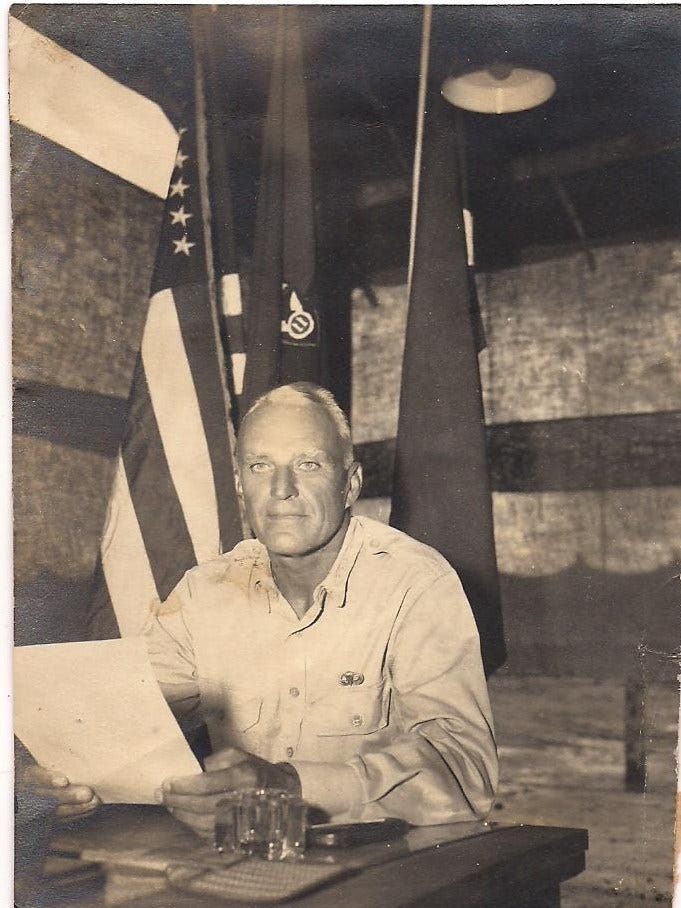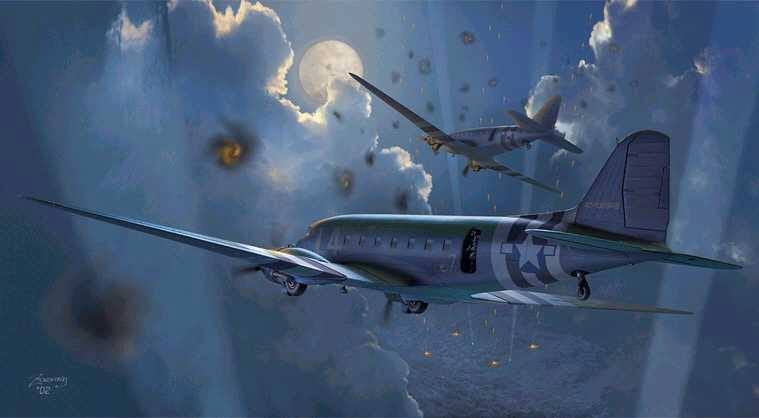In the history books, the Allied landings in Sicily stand in broad relief as a learn-on-the-job military operation. It’s where a new army cut its teeth and pulled out a “W,” albeit a tempered one. Axis armies escaped, the Americans suffered fratricide and British gliders sunk in the ocean, and Patton and Montgomery were unhinged in an epic race. All are true events. However, tellings of the great events have suffered from rote repetition in books.
Speaking for the 82nd Airborne Division’s role, this revolves around the fratricide, wherein US forces shot down many paratroop transport planes, and Jim Gavin staring down Panzers at Biazza Ridge. Most books, suffering the rote repetition, lack the rigorous analysis of archival material to pull meaning and understanding from these events, and how they came to be.
As to the use of airborne forces, one commonly touted outcome which holds water are improvements in planning. How the airborne nestled into the broader picture is paramount to derive understanding. The myriad forces of warmaking exerted all their influences upon how this esoteric division was ultimately employed. And it bitterly culminated in the disastrous fratricide which is so well-known.
Infantry, Infantry, Infantry
General George Patton felt it imperative that the entire 82nd Airborne Division be employed. His concerns were solely tactical. He had too few infantry, an expansive front, and desire to use the paratroops to exploit gains while the beachhead was feeble. But due to a shortage of aircraft—US industrial production was focused on bombers—it would require more than one lift to land the 82nd.
British General F.A.M. Browning began the thwart the plan.
Deploying the three regiments of the division devolved into three points of friction:
Casualties: Browning argued that more than one lift would be too exposed to heavy fire
Salvaging of gliders: too many would be damaged beyond reuse
Naval shipping: to land support elements was lacking
Enter, the Dueling Airborne Advisors
Patton’s antagonist manifested in the person of General Browning, British airborne advisor. On June 21, Patton recorded:
I saw General Eisenhower and told him that I was sure that General Browning, the airborne advisor to General Alexander, would try to keep us from getting the rest of the 82d Division… I believe that what Browning will do is to accede in principle to the use of the rest of the 82d Airborne Division, but that he will find operational difficulties which will prevent its being moved… I still feel sure we will get double-crossed.1
It was an astute suspicion. Three days later, Browning tried an end-run around the Americans. General Alexander, head of the amalgamated planning circle, was scheduled to meet the commander-in-chief the following day when Browning furnished him a letter outlining issues, discussed above, with deploying more than one regiment of the 82nd Airborne.
Browning’s protagonist obtained a copy of the letter the night before Alexander’s meeting. Major General Joseph Swing, American airborne advisor, had issues with the facts as presented. He requested audience with Alexander a few hours before his meeting. He outlined the American point-of-view:
Casualties: Browning’s figures were in error. The division was 10% over-strength with a trained replacement pool of 2,500
Salvaging gliders: Swing estimates they would recover 50% “due to the manner in which they would be landed.”
Naval shipping: Because the desire from all sides was to pull out the 82nd at the earliest possible date to participate in future operations (this was probably the British’s/Alexander’s reason for trying to thwart the use of more than one regiment), the 82nd would not need its heavy vehicles and maintenance units.
Swing reiterated that Patton, the tactical commander, felt it “imperative” that he have use of all 82nd Airborne’s regiments. But in reality only one—the 505th Parachute Infantry, coming in the first lift—had a defined mission. As will be documented in my upcoming book Battle Surgeons, the act of the 504th jumping was tactically purposeless. But because of a naval vessel shortage to land them otherwise, and Patton’s imperative need for infantry, it was done—after Eisenhower sustained the Swing/Patton position.2
So, who was right and who was wrong? As with many answers in history, and of the operational art, “It depends.” There are always trade-offs, and a cost of inaction. The perfect conditions never exist.

Balance in the Operational Art
Material constraints narrowed options. There was no way to bring in the division all at once due to lack of transport aircraft, exposing it to greater risk on subsequent airdrops—Browning’s argument. But the infantry was needed to accomplish the mission—the Swing and Patton argument, later validated due to having to keep the 82nd for the subsequent conquest of the Mediterranean isle. This, as Alexander and Eisenhower feared, threw Major General Ridgway and staff into disarray as they began planning to go into Italy and limited their ability to participate.
And as the US was managing a global war, there was not enough slack in Mediterranean shipping to get the division’s support elements to Sicily, leaving the 82nd to obtain all its supplies initially through 1st Division, and setting the 82nd up to learn some hard lessons about their organization.
So, again, who was right, and who was wrong?
Hey there! If you have made it this far, I can only imagine that you humble me deeply by enjoying Ridgway’s Notebook, my labor of love, which often distracts me more than it should. If you find value in this humble publication, please consider using the below link to send it to one person you know who may also appreciate it.
Stay tuned for next Saturday’s edition of Ridgway’s Notebook: “The Controversial Withdraw”
📚READ OF THE WEEK📚
It’s very near the end of the fiscal year in the United States, which means budgets—including defense budgets—will be in the news cycle in short order. This is a fascinating look at Britain’s military spending in the Napoleonic-era, with some comparisons to our current defense expenditures.
George S. Patton, Diary. Entry 21 June 1943. Library of Congress, George S. Patton Papers: Diaries, 1910 to 1945. https://www.loc.gov/collections/george-s-patton-diaries/about-this-collection/#:~:text=The%20diaries%20of%20U.S.%20army,concentrated%20from%201904%20to%201945.
Eisenhower and Swing were West Point classmates and lifelong friends. Swing would be appointed the CIS Commissioner in the Eisenhower Administration.






Great article! The fratricide was the navy firing on the transport aircraft. I don’t believe they were informed of the operation. Also the reason for the black and white invasion stripes painted on aircraft for the Normandy invasion.
Interesting that the army almost disbanded the whole airborne concept until a bunch of test drops were conducted after WWII. The 187 Airborne Regimental Combat Team (now part of the 101st Airborne) working with the new TO&E and tactics conducted 2 successful airborne operations in the Korean War.
Great read and interesting subject matter. I can't imagine those American troops who accidently shot down their own guys. The regret carried forward through life must have been unbearable. As far as the poll goes, I always default to Patton. The more I read about the man, the more I trust him. He was pure of heart and mind and only wanted to win.